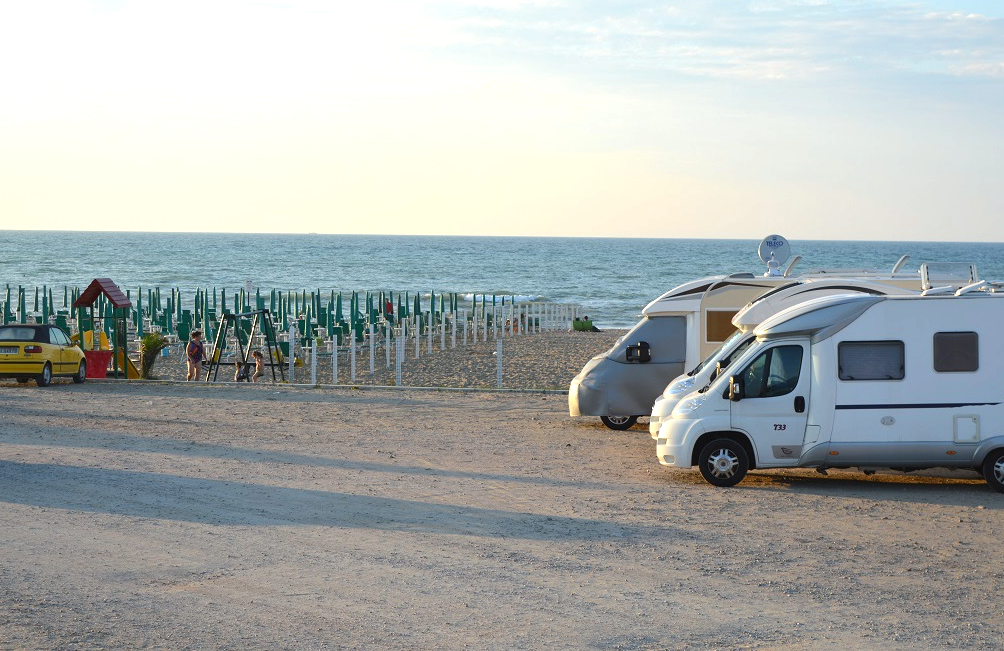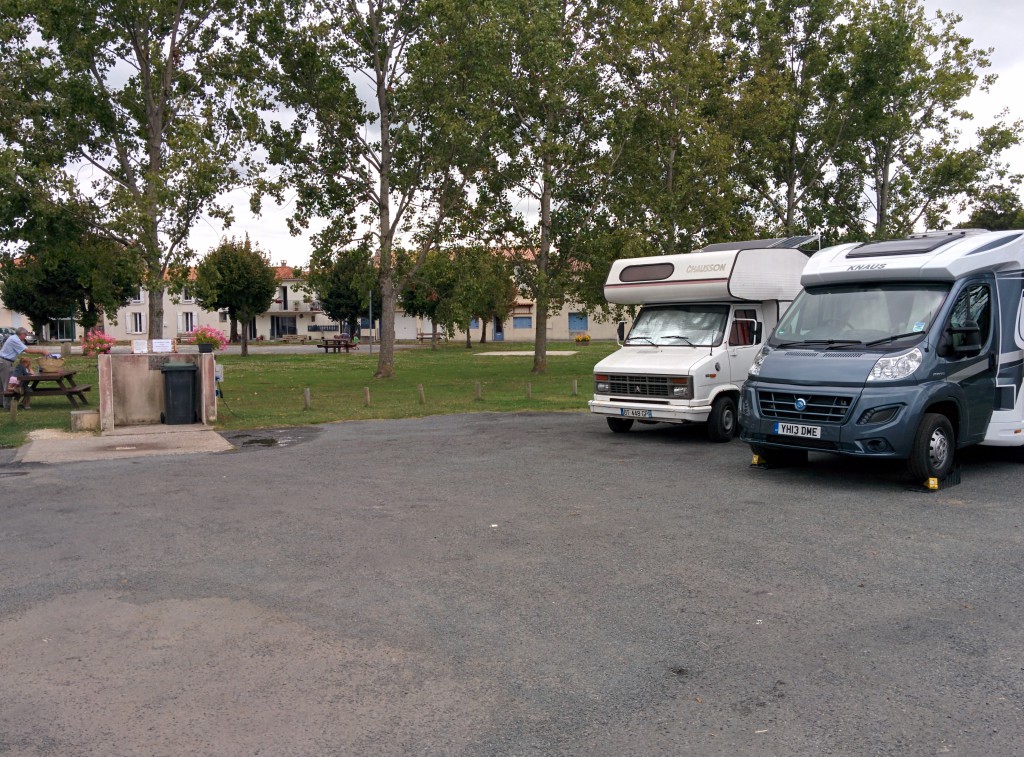You are planning a motorhome trip in Italy and want to be up to date on motorhome legislation in this country? Find out everything you need to know about motorhome rules in Italy in this article!
Motorhomes rules for driving and parking in Italy
Motorhome traffic
What license do I need to drive a motorhome?
As in many other European countries, if you’re planning to drive a motorhome weighing 3.5 tonnes or less in Italy, your B license will be enough. If you want to drive a motorhome with no weight or length limit, and with a trailer of up to 750 kg, you’ll need a C license. Finally, to drive a motorhome weighing over 3.5 tonnes and up to 7.5 tonnes (maximum authorized weight), you’ll need a C1 license.
Even if you don’t need a special license to drive a motorhome up to 3.5 tonnes, be aware that you’ll need time to adapt to the vehicle’s size!
Is there a special Highway Code for motorhomes?
The Highway Code governing car traffic is the same for motorhomes in Italy! So speed limits are the same for everyone! As a reminder, here are the current speed limits for vehicles up to 3.5 tonnes in Italy:
- 50 km/h in urban areas
- 90 km/h on extra-urban secondary roads
- 110 km/h on extra-urban main roads
- 130 km/h on motorways
Motorhomes over 3.5 tonnes must comply with different speed regulations:
- 50 km/h in urban areas
- 80 km/h on extra-urban secondary roads
- 80 km/h on main extra-urban roads
- 100 km/h on motorways
However, it is important to remain vigilant, whatever the total weight of the vehicle. A motorhome should always have a maximum speed of between 100 and 110 km/h on the motorway, even if it weighs less than 3.5 tonnes, because of the braking time.
As a general rule, always comply with local regulations, which may impose special bans on vehicles of a certain size. We’re thinking in particular of the Amalfi Coast, renowned for its pretty villages overlooking the sea and its narrow streets. Depending on the time of year, motorhomes are not recommended or even forbidden. If you’re planning a trip to this region, pay close attention to the traffic situation and keep up to date with the latest information. The traffic situation varies from week to week, depending on tourist flows and the time of year.
What freeway charges apply when travelling in a motorhome?
Practically all motorways in Italy are subject to tolls. Motorway tariffs are set according to the class to which the vehicle belongs (A, B…), itself determined by the number of axles and the height of the vehicle. You can check here which class your motorhome belongs to! Pay close attention to the tariff category of your motorhome, or you risk being over-classified.
Motorhome parking

According to article 185 of the Italian Highway Code, you can sleep in your motorhome on the public highway, provided that it is properly parked and that you do not behave in a “camping” manner. So it’s best to avoid taking out your awning, outdoor furniture and wheel chocks. It’s also forbidden to dispose of organic waste and sewage outside special systems, on pain of incurring a fine ranging from 84 to 335 euros. You should also be aware that motorhome owners are charged 50% more than car owners for paid parking.
To avoid any risk, use the CaraMaps application to find service areas specially designed for motorhomes, or campsites!
Wild camping in Italy
- Wild camping is officially forbidden in Italy, and can be punished by a fine ranging from 100 to 500 euros, although the regulations governing motorhomes remain rather vague and differ from region to region. This is the case in Italy’s most touristic areas, where the authorities are particularly strict about unauthorized camping. There are, however, a few exceptions that allow wild camping:
- Outside tourist areas and major cities, inland camping is generally tolerated by local residents and authorities.
- It is possible to spend a night in your vehicle to “restore your driving ability“. The absolute rule is to spend only one night in the same place!
- Find out about regional camping laws, as some places are less tolerant than others! For example, in Abruzzo, a region renowned for its national parks, camping is only authorized in motorhome parks for a maximum stay of five days, and only if “minimum hygiene and environmental protection requirements” are met. It is the municipalities that define the parking zones and decide whether to levy a tourist tax (in accordance with regional law n.16 article 9).
Want to find out more about wild camping in Italy? Have a look at our blog post “The best places for wild camping in Italy“!
How motorhomes have been regulated in recent years
Restrictions to protect the environment
Like its European neighbors, Italy has also recently introduced environmental zones. These zones are visible in major cities such as Rome, Florence, Verona, Pisa, Palermo, Bologna and Milan. Called “Zona a Traffico Limitato” (ZTL), these zones aim to limit air pollution and preserve historic city centers. They are closed to motorized traffic at certain times of the day, particularly during rush hour. If you wish to enter these cities during the blackout period, you’ll have to pay a fine ranging from 80 to 335 euros. Don’t worry, the times of prohibition are usually indicated on the signs! If you have any doubts, we recommend that you go directly to the Ministry Infrastructure and Transport website, which lists all cities with a ZTL!
Legislation on air pollution is bound to change over the coming months and years, so keep up to date on the subject as much as possible for your next motorhome trip!

Congestion charging and Eco Pass
Some cities have also introduced an Eco-Pass system. Visitors must pay an “Area C Pass“, usually worth around 5 euros, to gain access to the city center. This area is announced as you pass through the congestion charge zone. You’ll find this Eco-Pass system in Milan, Bologna and Palermo, for example.

Piedmont’s new 2023 legislation on itinerant tourism
Piedmont was one of the first regions in Italy to recognize the activity of itinerant tourism.
In February 2023, new legislation came into force on accommodation facilities for itinerant tourism (campsites and camping areas). The new regulations for motorhomes aim to raise the standards of these facilities, with a classification system of up to 5 stars, to meet the growing demand from outdoor tourists. The new legislation therefore aims to improve the quality of services offered at existing outdoor accommodation facilities (campsites and motorhome reception areas), as well as to create new structures that meet these new standards.

Planning a road trip to Italy? Find out more about our itinerary for a special trip to Italy here!

In addition to this superb itinerary in Italy, discover other itineraries in this country shared by the community, such as «Discovering the sunflower fields in Tuscany», «Complete wild camping itinerary in Italy» and much more!
Did you enjoy your CaraMaps road trip experience and the advice from the community? Share your best anecdotes or photos thanks to the 100% collaborative CaraMaps app.
Follow us now on our Instagram page @caramaps where you’ll discover incredible spots, and on our Facebook page where you’ll find new areas, new itineraries and news from the motorhome world every day!
Also check out our other blog posts «Motorhome rules in Germany 🇩🇪», «Motorhome rules in France in 2023» and more!


